Courting Europe (1992)
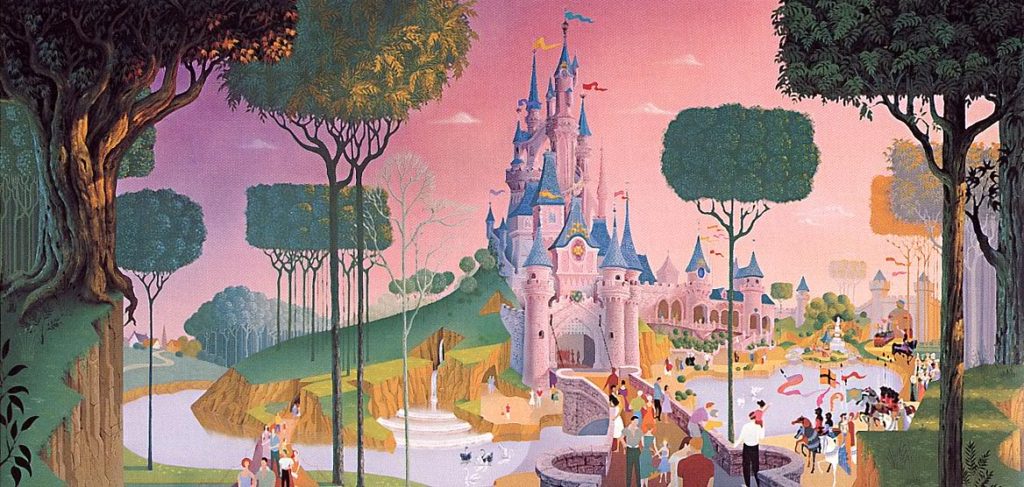
When it was announced that a new “EuroDisneyland” was to be built near Paris, the French public practically revolted. Like the Eiffel Tower a century before, the French were determined to oppose the garish Disney resort at all costs, blockading its construction and protesting its development. It seemed that nothing Disney could do would quell the anger and hatred that the French felt toward what would surely be an American blight in the French countryside.
Prominent French intellectuals and writers at once denigrated Disney’s planned resort, with the unfortunate label of a “cultural Chernobyl” becoming a common refrain. Critics called the plans a radical move of cultural imperialism – an American invasion meant to force the unhealthy consumerism of the U.S on France. One reporter for a conservative French daily paper wrote, “I wish with all my heart that the rebels would set fire to Disneyland.”
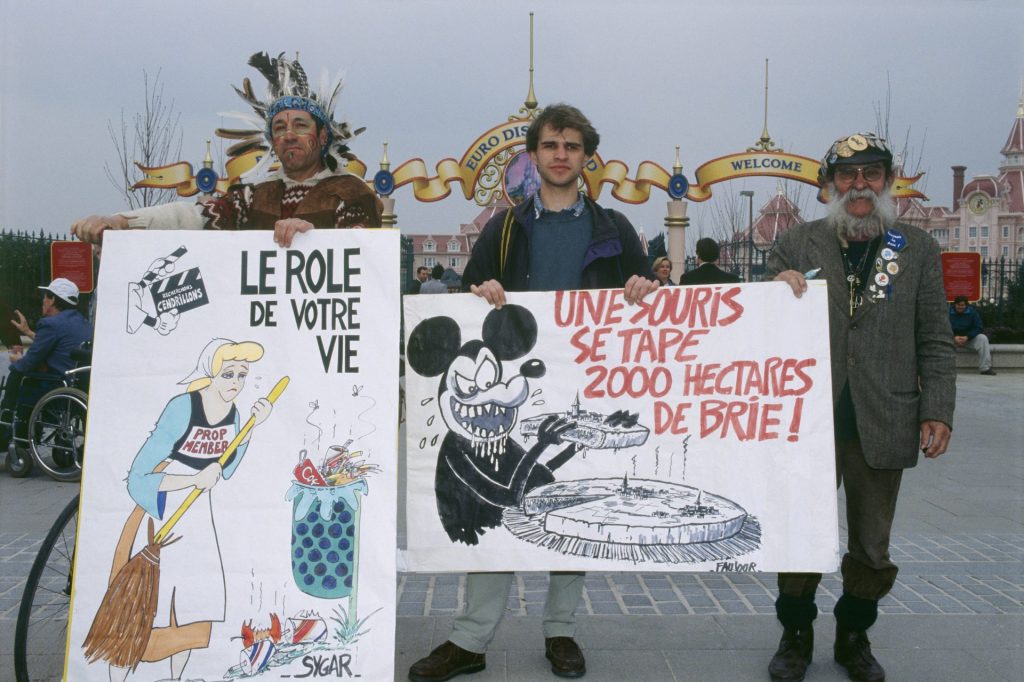
With mechanical precision, Disney failed to account for European norms in their positioning of the park. For example, French labor unions attacked the company over an appearance code limiting makeup, facial hair, tattoos, and jewelry, seemingly imported from American parks with no consideration for French culture. (Worse, when informed that such restrictions were illegal under French law unless they were necessary for the job’s responsibilities, Disney didn’t relent, insisting that lack of facial hair was necessary toward the company’s identity and the park’s success.)
Likewise, Disney severely failed to account for another essential piece of European culture and cuisine. Despite recognizing how essential alcohol would be in its EPCOT version of France, Germany, Italy, and the U.K., Disney’s theme park built to serve those countries excluded it.
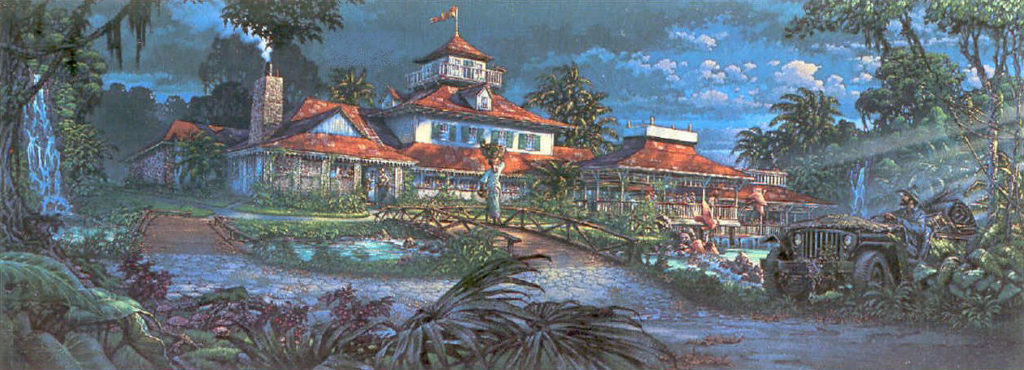
Surely in retrospect, we can see that the decision to exclude alcohol from EuroDisneyland on the already-shaky grounds of an already-broken “tradition” that already had arbitrary exceptions dating to Walt’s time anyway was… well… unwise.
It’s no secret that attendance at EuroDisneyland was a fraction of what Disney had expected. (The financial faltering of their new, overbuilt European resort lead to a decade of closures, cost-cutting, and cancellations across Disney Parks.) And naturally, Disney set out to make as many low-cost, quick-win corrections as they could manage.
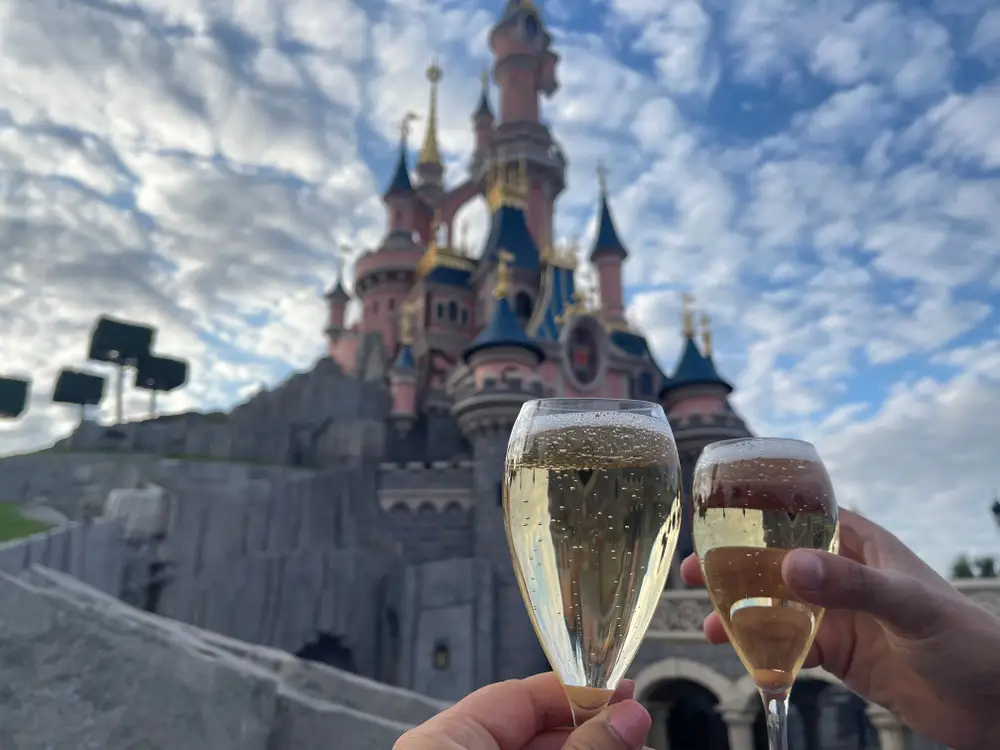
Without much pomp or circumstance, Disney announced just a year after the resort’s opening that EuroDisneyland would begin serving alcohol. “It’s mainly in response to our non-French European visitors,” a spokesperson said. “Visitors from Germany or England want wine because it’s part of the French experience.”
Just like that, the first “Castle Park’s” alcohol defenses were toppled… And at least for a while, Disneyland Paris remained the only exception; the only “Castle Park” with alcohol available to the public. But that exclusivity didn’t last…
Kingdom Falls (2012 – 2018)
The next followed two decades later. And though the next Kingdom to fall was in Florida, you can still blame the French.
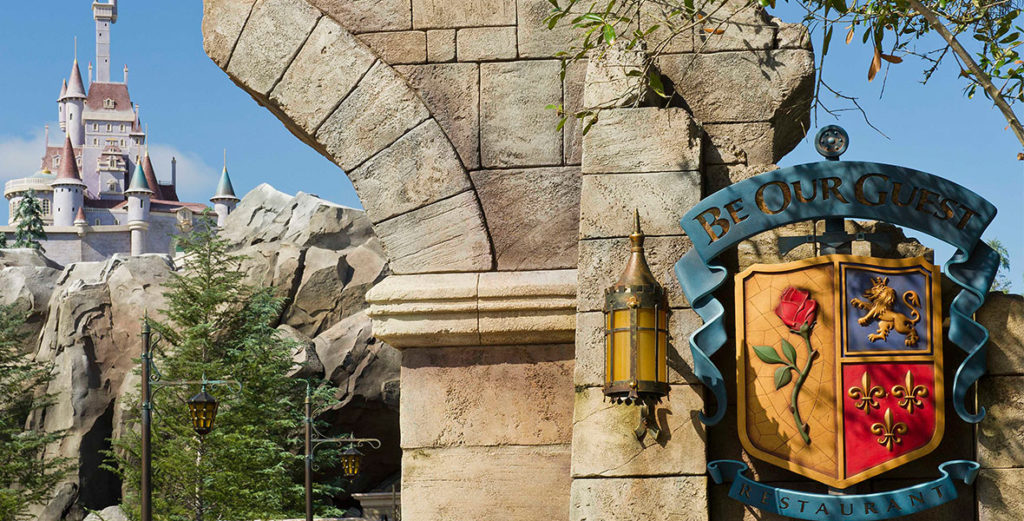
2012 saw the opening of Magic Kingdom’s historic New Fantasyland expansion. Among its most talked-about offerings was the lavish Be Our Guest Restaurant, allowing guests to dine in scenic locations from 1991’s Beauty and the Beast, like the tattered West Wing and the iconic, golden Ballroom.
Despite its opulence, Disney initially left the location uncharacteristically accessible by making it a quick service dining option at lunch, only transitioning to a full service, prix fixe dinner service in the evening…
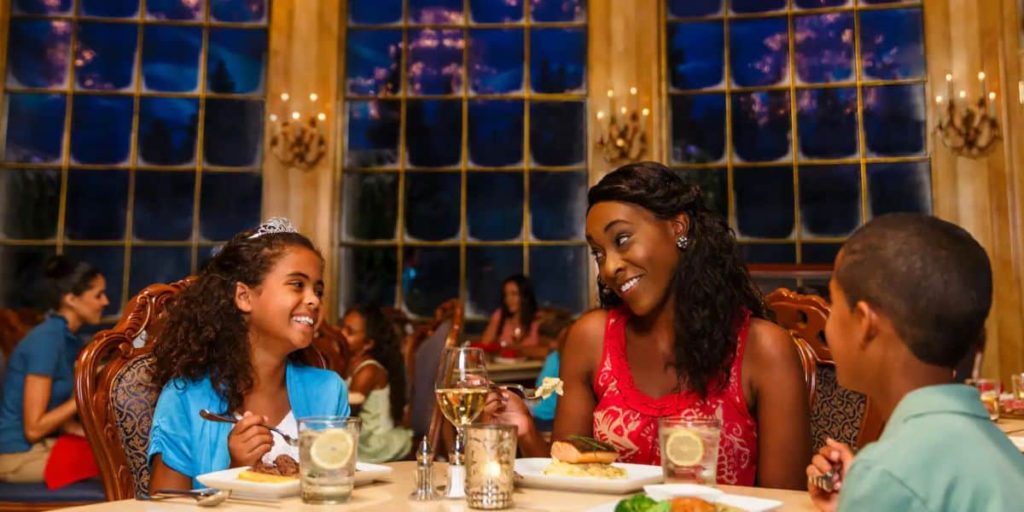
…And like magic, the dinnertime transition would see beer and wine appear on the menu. There are probably a lot of reasons. First, the upscale eatery’s French setting made the inclusion of beer and wine a reasonable thematic element for a fine dining setting. Second, alcohol has a significant profit margin that could substantially increase revenue for the much sought-after, prix fixe restaurant.
Frankly, knowing that alcohol would be “contained” to a table service setting – not sold from carts or ever-present on paths like at EPCOT – probably soothed even the most ardent anti-alcohol fans by seeing how a “Castle Park” could do alcohol on its own terms, in a unique way. And given its success, it’s no surprise that it wasn’t the end.
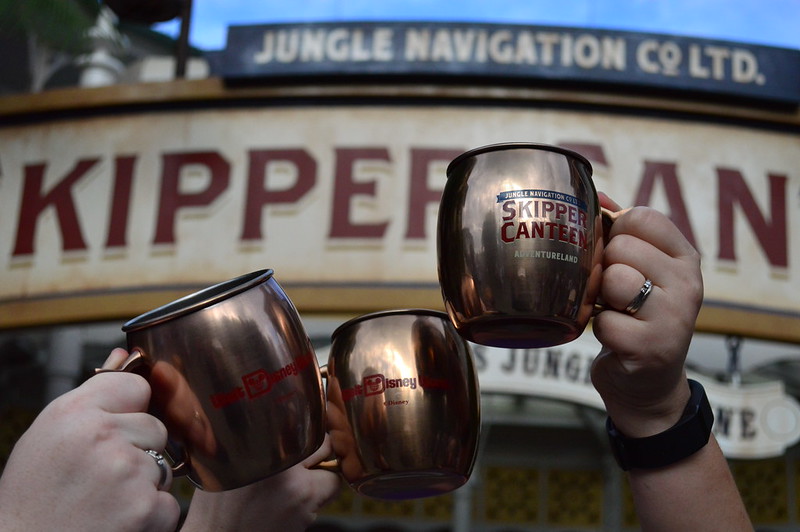
Four years later, in 2016, the highly anticipated Jungle Navigation Co. Ltd. Skipper Canteen opened in Magic Kingdom’s Adventureland. Bridging the gap between the park’s “World Famous” Jungle Cruise and S.E.A.: The Society of Explorers and Adventurers, the Skipper Canteen was noted for its legitimately ambitious and exotic menu… and its not-so-subtle inclusion of beer and wine.
The launch of the new restaurant also served as cover for the simultaneous debut of beer and wine at three other Magic Kingdom table service restaurants: Tony’s Town Square, Cinderella’s Royal Table, and Liberty Tree Tavern. Including Be Our Guest, that left five of Magic Kingdom’s table service restaurants with alcohol on their menus.
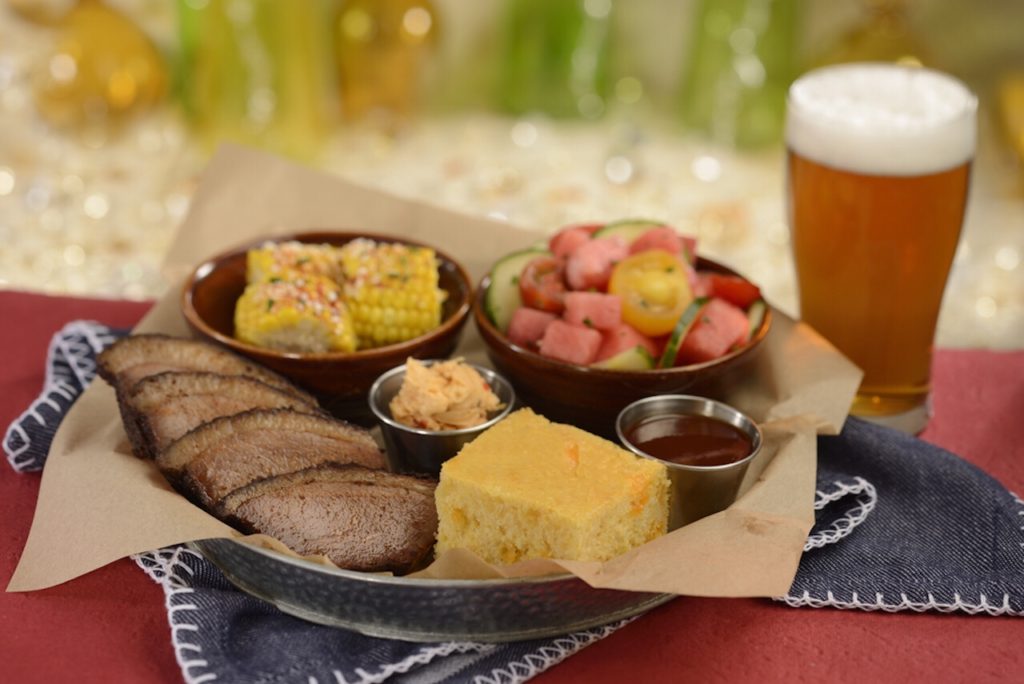
Two years after that, in May 2018, The Plaza Restaurant, The Crystal Palace, and The Diamond Horseshoe joined. That meant that every table service restaurant at Magic Kingdom had jumped on (or, if you’d rather, fell off) the bandwagon, serving wine and beer.
Again, at least for now, Magic Kingdom seems to have established a new playbook for itself – at Magic Kingdom, alcohol is not verboten, but it’s also not prevalent. You won’t find beer carts across the park, or “Drink Around the World” challenges. Rather, alcohol can be found as an add-on at table service and prix fixe restaurants. For most fans, it seemed like a fine compromise. The question was, would that new set of rules make its way to the other U.S. “Castle Park”? And how would its local, vocal audience feel about it? Well…
Oga’s Cantina (2019)
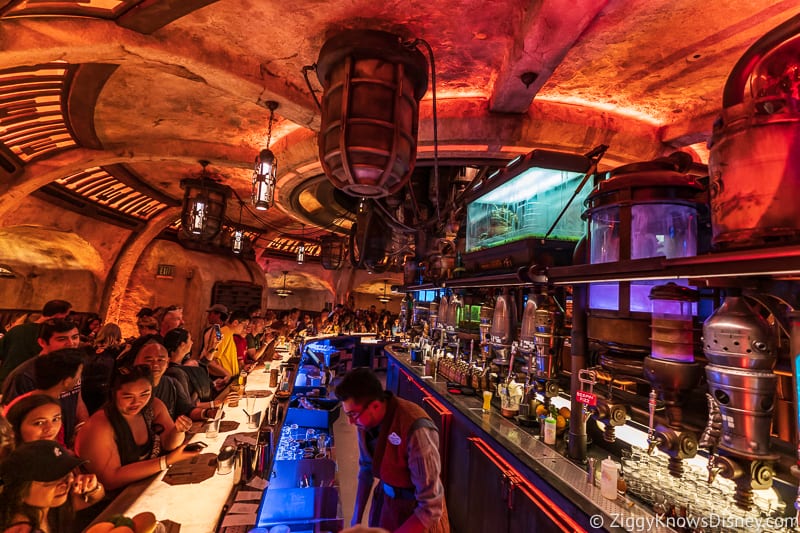
That brings us back to the West Coast – where Walt Disney’s original rules about alcohol were forged. Given that both Disneyland and Disney’s Hollywood Studios would receive nearly identical copies of Star Wars: Galaxy’s Edge and its “Oga’s Cantina” bar, it wasn’t much of a surprise when Disney announced that their menus would be identical, too. That included, of course, “libations for adults.”
Upon its announcement, Disney was careful to note that even in this outpost for galactic scum, the drinks would be pre-mixed, and must be consumed in the restaurant. In other words, alcoholic alien slushes were limited to the premises, and you wouldn’t find guests carrying rum-and-Cokes through Fantasyland… yet.
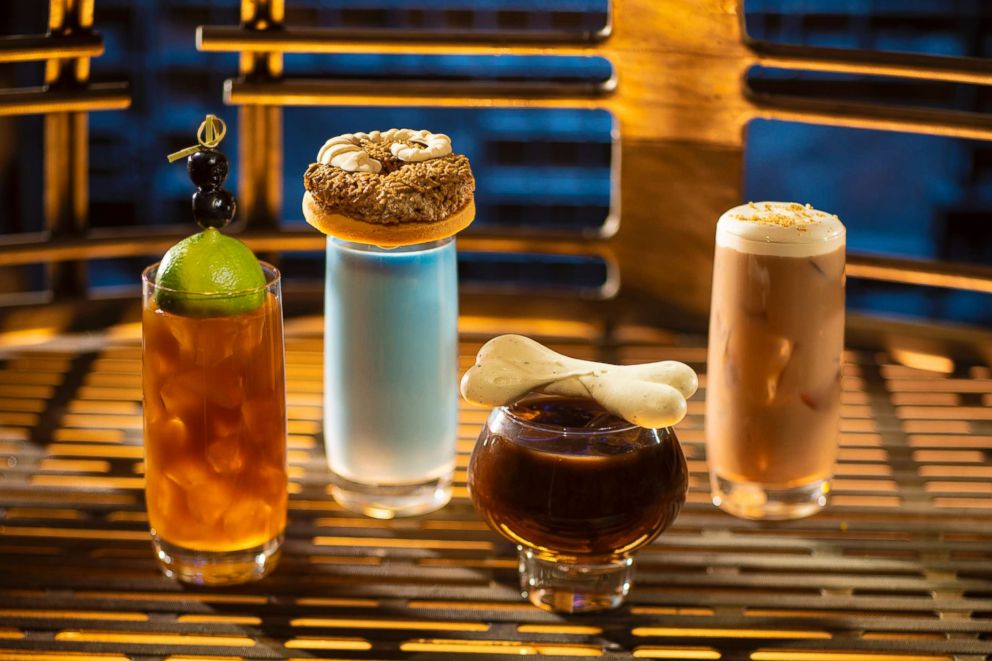
Like Magic Kingdom’s Be Our Guest Restaurant seven years earlier, the alien drinks on Batuu would be a rare, contained, low-profile, and (for now…) only instance of alcohol available to the public in the park. And just as Disney had gone to great lengths to ensure that Galaxy’s Edge would be visually and narratively separated from the rest of the park, it stood to reason that maybe alcohol would remain exclusive to Batuu.
In other words, there was at least some long-term possibility that – just as LEGO sets and Star Wars video games are kept out of this hyper-realistic new land – alcohol might be kept in. That possibility turned out to be short-lived.
Dry-no-more
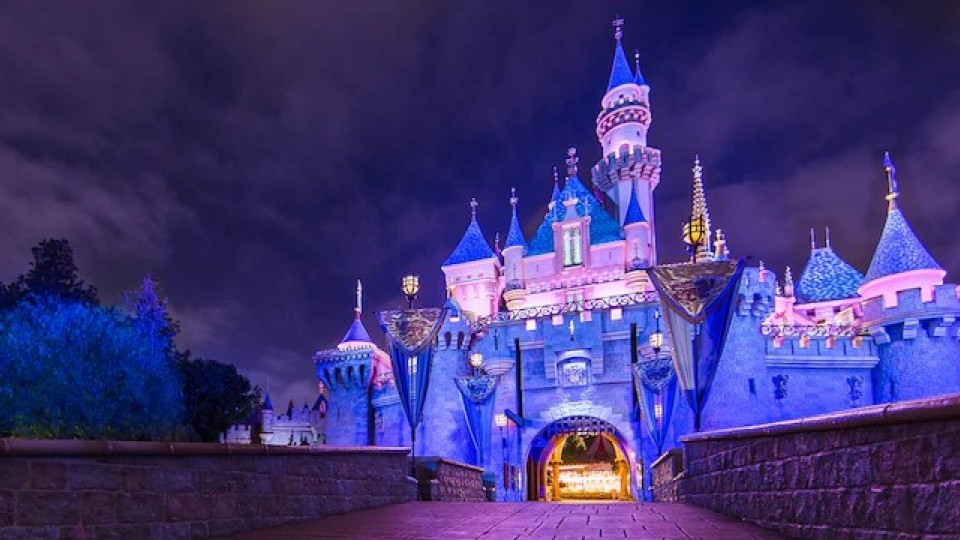
Disney’s theme park division was reformed into the Disney Parks, Experiences, and Consumer Products under then-Chairman Bob Chapek in 2018 (serving as a pretty naked statement on Disney’s positioning of the parks as “products,” “IP endpoints,” or “brand loyalty centers”). But it was the COVID-19 pandemic and the parks’ global closure that served as a chrysalis-type pause from which a new kind of Disney Park would emerge: one focused on per capita guest spending.

When Disneyland reopened in April 2021 after its 14-month COVID closure, limited capacity, face coverings, and the end of FastPass and Annual Passes were what made headlines. But quietly, another fundamental piece of Disneyland had changed. Just as Magic Kingdom’s allowance for alcohol had quietly spread from Be Our Guest to the Skipper Canteen, the iconic Blue Bayou Restaurant in New Orleans Square re-opened in May 2021 with a new menu that included beer, sparkling wine, and a rum-based hurricane cocktail.
Still fundamentally different than at Disney California Adventure, where beer and wine are plentiful and served from carts across the park, the second leak in the dam was both inevitable and, for most, entirely palatable. Maybe more to the point, the first instance of alcohol outside of Galaxy’s Edge barely registered with fans or the public. Which must’ve been very good news for Disneyland management.
Through increasing experiments with alcohol in Disneyland Paris, Magic Kingdom, and Disneyland’s own Oga’s Cantina and Blue Bayou, it appeared that Iger was right in 2018 when he told The Hollywood Reporter, “This just seemed like one of those traditions that if we changed it the empire wasn’t going to crumble.”
And voila. On July 26, 2023, reporter Scott Gustin reported that Disneyland’s flirtation with alcohol would become a more committed relationship. As had happened in “Phase II” of alcohol expansion at Magic Kingdom, a select three of Disneyland’s table-service restaurants would debut new menus. By that fall, diners at the Carnation Café, River Belle Terrace, and Café Orleans would be able to select from not just specialty cocktails, but beer and wine – still in table service, sit-down restaurants, mind you, but full-on beer and wine nonetheless.
Even those Disney Parks fans who object to the notion don’t seem too verbal about it. As had happened in both Paris and Orlando, the slow seep of mixed drinks in select table service settings seemed to somehow inoculate Disneyland to the could-be horrors of alcohol, and the unique “Castle Parks” playbook seemed agreeable enough.
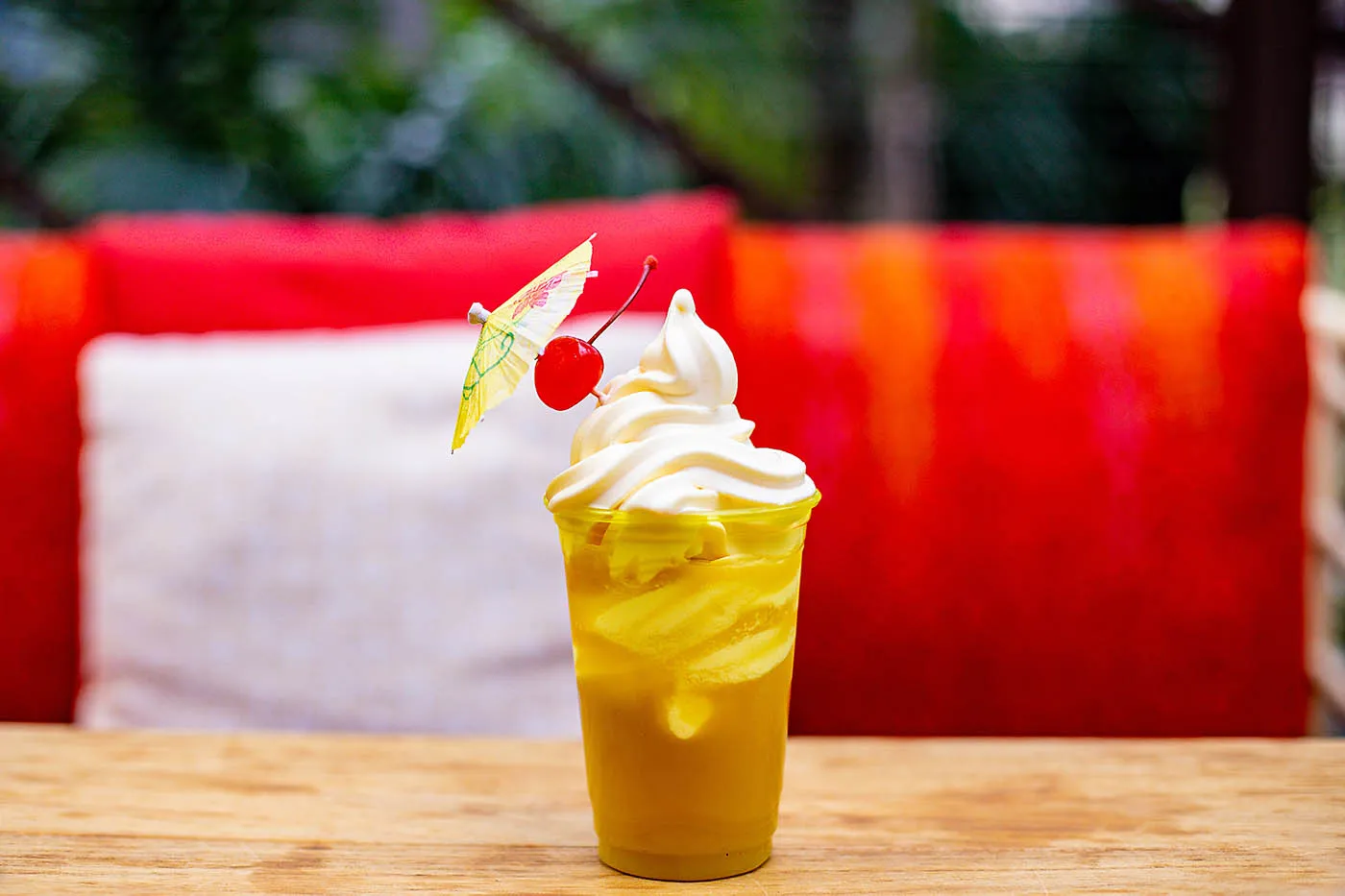
Of course, with alcohol now having expanded to five eateries at Disneyland, there’s no question that the dam has cracked. As at Magic Kingdom, rounds of expansion will undoubtedly see alcohol spread to every sit-down, table-service restaurant. And there it may stay… and it may not. (After all, at this point, would we really object to Disneyland’s Tropical Hideaway serving the same rum-infused Dole Whips that the Disneyland Hotel already perfected?)
In any case, let’s get to the core of it… On the next page, we’ll sum up our thoughts on this “tradition” and what it changes (or doesn’t) at Disney Parks.


